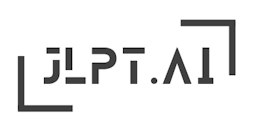

N2
音読み:satsu
訓読み:fuda
サツsatsu
ふだfuda
Bill, note, tag
Imagine a piece of paper with a vertical line in the center. On the left side of the line, there is a small tag or label attached. This represents '札' as a bill or note with additional information.
The kanji '札' is commonly found in JLPT materials, especially at the N2 and N3 levels. It is important for understanding vocabulary related to money, finance, and pricing.
その札は偽物です。
That bill is a counterfeit.
そのふだはにせものです。
sono fuda wa nisemono desu.
この札を見てください。
Please look at this tag.
このふだをみてください。
kono fuda o mite kudasai.
札束を持ち運ぶのは大変です。
Carrying a stack of bills is tough.
さつづかをもちはこぶのはたいへんです。
satsuzuka o mochi hakobu no wa taihen desu.